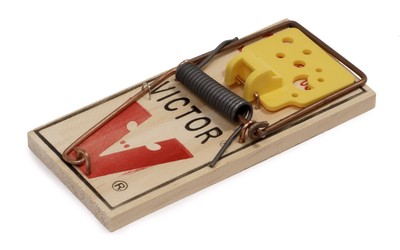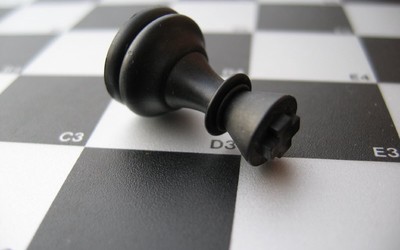
Maria Wallner, CC BY-SA 3.0 DE <https://creativecommons.org/licenses/by-sa/3.0/de/deed.en>, via Wikimedia Commons
Played in Austria - Part 2
Three more games that were played in Austria. I hope you will enjoy them as much as I did!Played in Austria - Part 2
Today I am going to show you three more games, that were played in Austria. As in the previous blog these games will be of pretty high quality and personally I found them quite enjoyable.
Let's get right to the games!
Game 1: Reka Horvath (1967) -vs- Georg Kravanja (2099)
17. Internationales Open Graz 2010, Round 6, Board 25. 2010-09-02, Brauhaus Puntigam, Graz, Austria.
If you read my previous blog post you are already familiar with Reka Horvath. Here is another game of hers that showcases her tactical skills and exciting style of play. Georg Kravanja is a very strong player too. He is now MK and plays for the club Schachfreunde Graz.
The reason I chose to present this game specifically on my blog is especially for the spectacular checkmating attack, which is a very fine specimen of its kind and well worthy of any chess tactics textbook. Highly instructive and satisfying to watch in my opinion.
In the analysis I linked a YouTube video by ChessCoach Andras, IM Andras Toth, which I can highly recommend you to watch, if you too are struggling with the question of when it is or is not a good idea to trade off the fianchettoed bishop. This left me quite puzzled, when I prepared the analysis of this game yesterday and during my research I found this video and it helped my understanding a lot.
For the sake of convenience here is the link to "The Secrets of the Fianchettoed Bishop": https://www.youtube.com/watch?v=I1Vp6Pe2FiA
Game 2: IM Georg Danner (2421) -vs- Andreas Peschel (2198)
Schwarzach Open (A), Round 2, Board 9. 2001-08-26, Schwarzach, Austria.
I knew IM Georg Danner personally, from having met him at numerous tournaments and from taking chess lessons from him. I was saddened when I learned of his passing on November 13th, 2021. When I think of a chess tournament, in the mental picture I see in my mind, he is always there in the tournament hall. He had a great personality, was always friendly and very generous with his chess knowledge, having great anecdotes to share of when he met players like Mikhail Tal and Ratmir Kholmov.
He sold secondhand chess books to make some extra money. Once when he noticed me admiring a pricey edition of the Hastings 1895 tournament book, which I could impossible afford to buy at that time, he generously offered to lend me the book for free! That was the kind of person he was and what I will always remember him for. He is deeply missed in the Austrian chess scene and I can not imagine that anybody who knew him could possibly have anything bad to say about him.
Those of you who are fluent in German can read his obituary here:
https://www.chess.at/archiv-service/blog/info-verband/5327-abschied-von-georg-danner.html
On the chess board he played mostly exciting and courageously but was also very capable of playing solidly and with a safety first approach when circumstances demanded him to do so. He loved the Colle System, the Dutch Defense, was very knowledgeable about Stonewall structures. Also he was one of the world's leading experts of the Blackmar Diemer Gambit and the Ryder Gambit, which he also regarded very highly.
The game I chose to show you here is a very good representation of his style of play. While I normally tend to focus mostly on openings and the middle game, this game has a very interesting endgame with king, rook and bishop against king, rook and pawn.
Game 3: Werner Suess (2079) -vs- FM Horst Watzka (2172)
Steirische Landesliga 2017/2018, Round 4: Spg. ISR -vs- Grazer Schachgesellschaft, Board 3. 2017-11-11.
One of the most annoying and most overplayed openings in my opinion is, when in the Two Knights Defense, White will play 4.Ng5 to greedily win a pawn by force. Everybody knows that it is supposedly not good for White, yet, when I have the Black pieces, I always struggle to prove compensation for the pawn.
"German master Siegbert Tarrasch called 4.Ng5 a "real duffer's move" (ein richtiger Stümperzug) and Soviet opening theorist Vasily Panov called it "primitive", but this attack on f7 practically wins a pawn by force. Despite Tarrasch's criticism, 4.Ng5 has remained a popular choice for White at all levels."
-- https://en.wikipedia.org/wiki/Two_Knights_Defense#4.Ng5
In this game, veteran Fidemaster Horst Watzka, with whom I have had the pleasure to play a couple of casual Blitz games some years ago - he won all of them - really punishes White for his greed. It gives me pleasure to watch how he exploits his space advantage and his much superior piece development to tear his opponent apart. It is quite instructive to watch.
As always, I hope you enjoy my selection of games and maybe you learned a thing or too. Please leave a Like and check out my other blogs as well. Thanks!
More blog posts by Sefegiru

Played in Austria - Part 1
In this series I will analyze games that were played in Austria. It will be a mixed bag of instructi…
Opening Tactics - Part 1: Good Traps -vs- Bad Traps
This is the first in a new series of blog posts on tactics in the opening. Today I will talk about t…
Opening Tactics - Part 6: Strike When You Are Ready!
Fundamental opening principles dictate the need for quick, harmonious and efficient development of y…